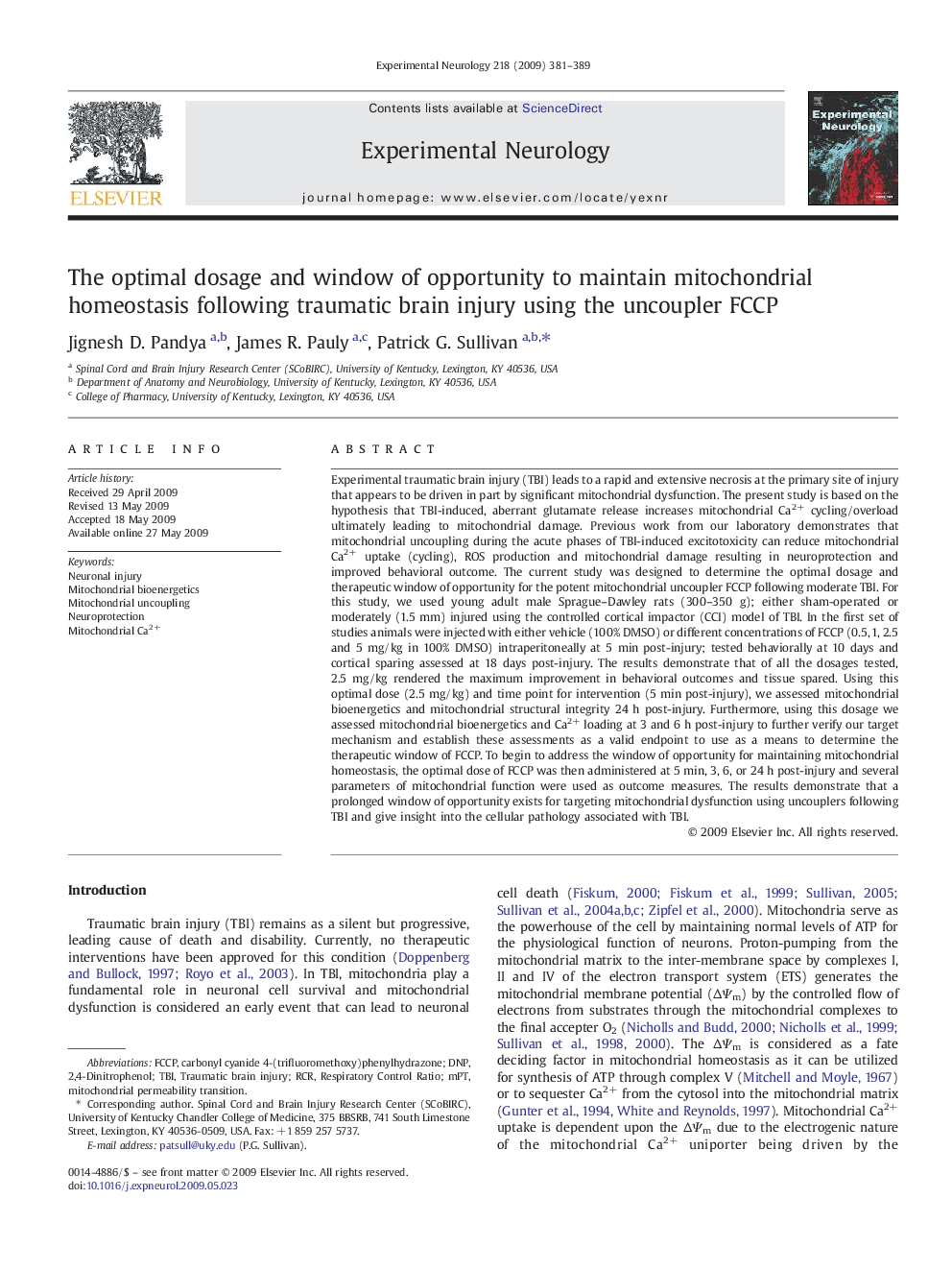| کد مقاله | کد نشریه | سال انتشار | مقاله انگلیسی | نسخه تمام متن |
|---|---|---|---|---|
| 3056237 | 1186558 | 2009 | 9 صفحه PDF | دانلود رایگان |

Experimental traumatic brain injury (TBI) leads to a rapid and extensive necrosis at the primary site of injury that appears to be driven in part by significant mitochondrial dysfunction. The present study is based on the hypothesis that TBI-induced, aberrant glutamate release increases mitochondrial Ca2+ cycling/overload ultimately leading to mitochondrial damage. Previous work from our laboratory demonstrates that mitochondrial uncoupling during the acute phases of TBI-induced excitotoxicity can reduce mitochondrial Ca2+ uptake (cycling), ROS production and mitochondrial damage resulting in neuroprotection and improved behavioral outcome. The current study was designed to determine the optimal dosage and therapeutic window of opportunity for the potent mitochondrial uncoupler FCCP following moderate TBI. For this study, we used young adult male Sprague–Dawley rats (300–350 g); either sham-operated or moderately (1.5 mm) injured using the controlled cortical impactor (CCI) model of TBI. In the first set of studies animals were injected with either vehicle (100% DMSO) or different concentrations of FCCP (0.5, 1, 2.5 and 5 mg/kg in 100% DMSO) intraperitoneally at 5 min post-injury; tested behaviorally at 10 days and cortical sparing assessed at 18 days post-injury. The results demonstrate that of all the dosages tested, 2.5 mg/kg rendered the maximum improvement in behavioral outcomes and tissue spared. Using this optimal dose (2.5 mg/kg) and time point for intervention (5 min post-injury), we assessed mitochondrial bioenergetics and mitochondrial structural integrity 24 h post-injury. Furthermore, using this dosage we assessed mitochondrial bioenergetics and Ca2+ loading at 3 and 6 h post-injury to further verify our target mechanism and establish these assessments as a valid endpoint to use as a means to determine the therapeutic window of FCCP. To begin to address the window of opportunity for maintaining mitochondrial homeostasis, the optimal dose of FCCP was then administered at 5 min, 3, 6, or 24 h post-injury and several parameters of mitochondrial function were used as outcome measures. The results demonstrate that a prolonged window of opportunity exists for targeting mitochondrial dysfunction using uncouplers following TBI and give insight into the cellular pathology associated with TBI.
Journal: Experimental Neurology - Volume 218, Issue 2, August 2009, Pages 381–389